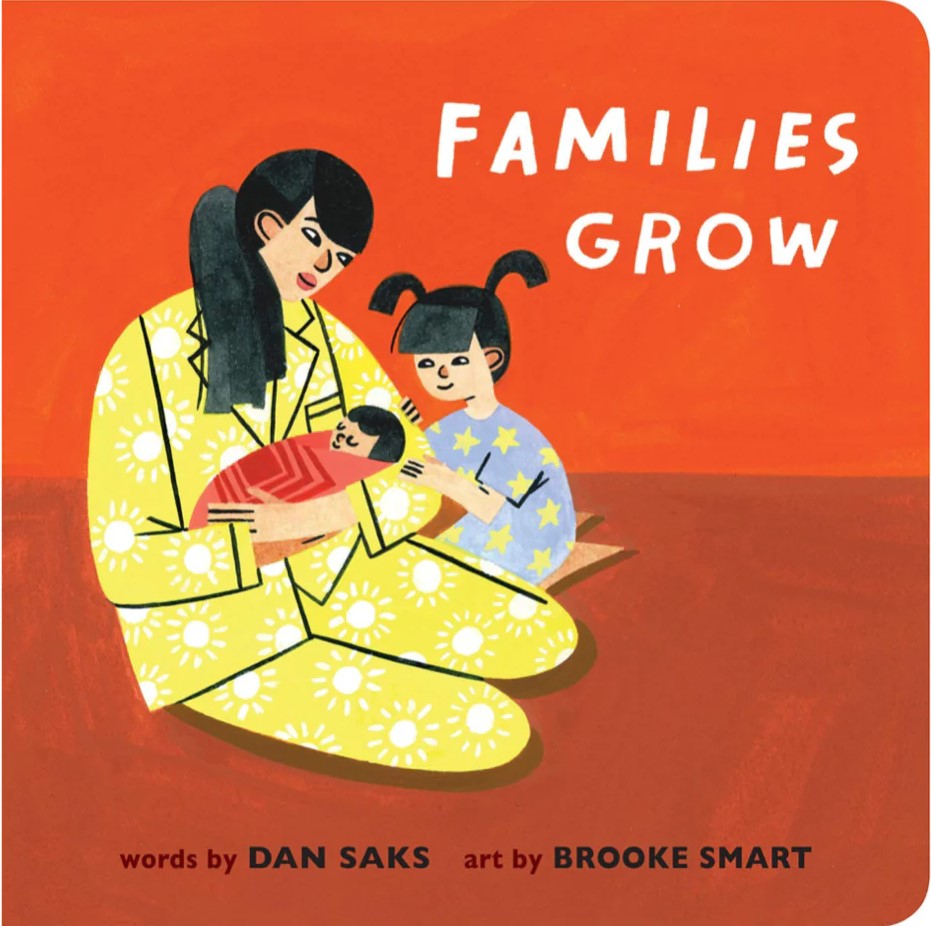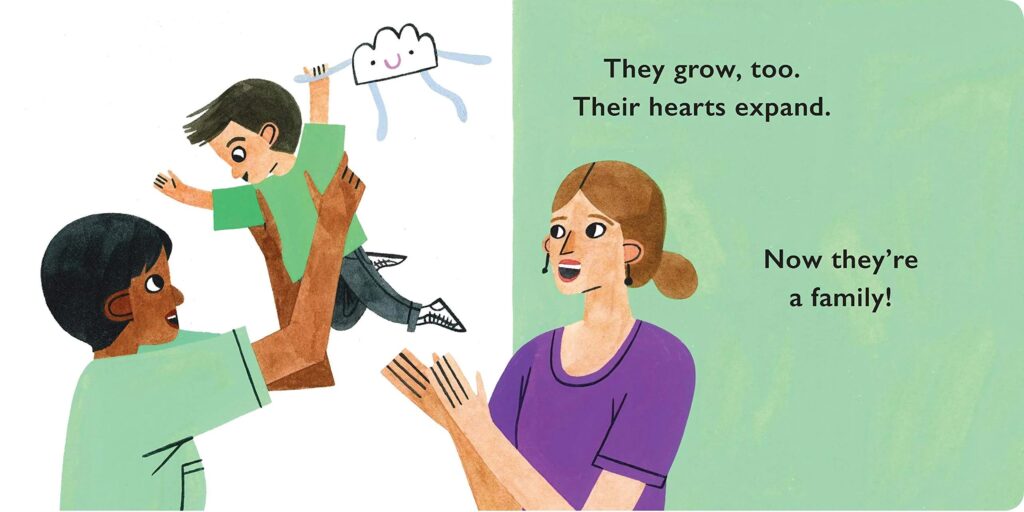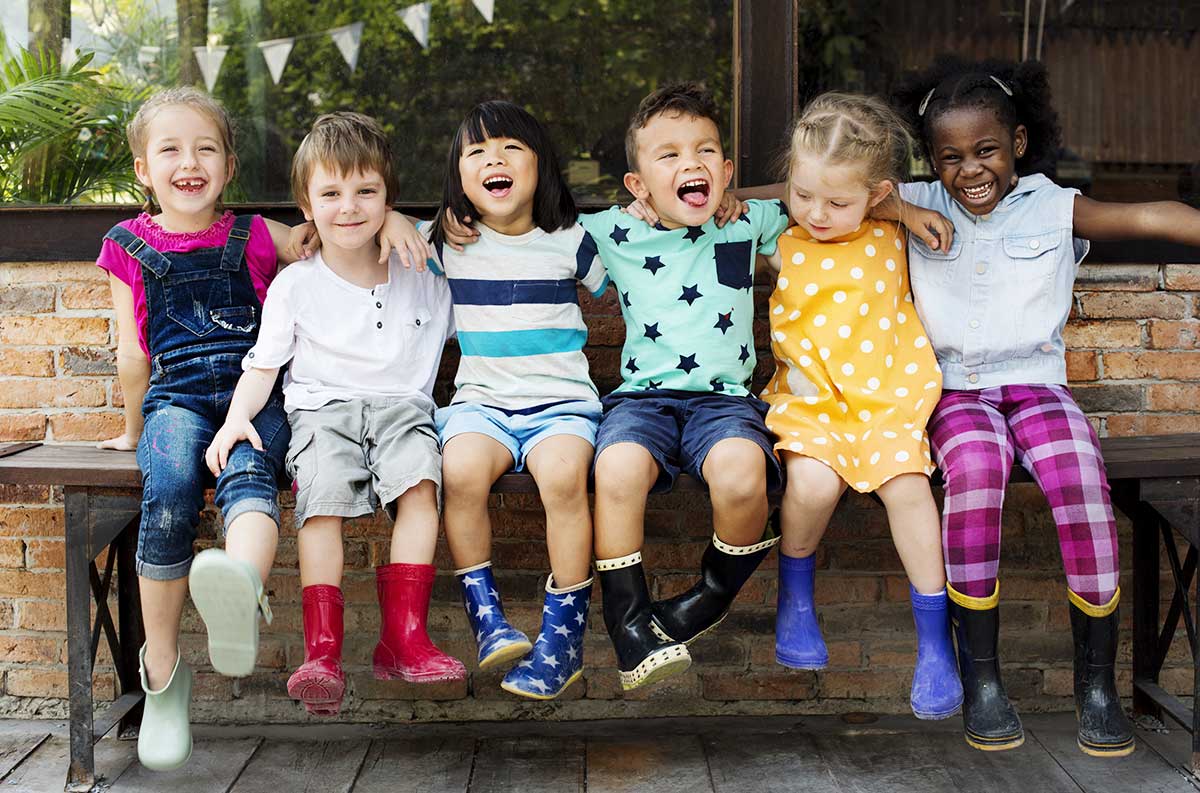
Inclusive Children's Book Teaching Guide
Families Grow
What is this book about?
A wish began your journey,
And now that you are here,
Our family has grown with love,
With love for you, my dear.
With lyrical, rhyming text that subtly references pregnancy, surrogacy and adoption, this lighthearted story introduces young children to the different ways that families are formed.
A glossary at the end of the book defines terms such as surrogacy, pregnancy, foster parents, and birth parents in simple, easy-to-understand language.
Who is depicted in this book?
- Multiracial families, including LGBTQ+ led families
What early childhood themes and concepts does this book explore?
- The diversity of people, including skin color, clothing and hair
- Characteristics of families
- The different ways that families are formed
How does this book support anti-bias education?
Families Grow includes LGBTQ+ led families, which provides an opportunity to validate children from families formed through surrogacy or adoption. This book may also be used to instill a sense of family pride by encouraging children to talk about their own families.
Depending on how the book is shared or used—and the developmental level of the children—Families Grow may be used to support the following core goal from the book, Anti-Bias Education for Young Children and Ourselves:
Identity—Teachers will nurture each child’s construction of knowledgeable and confident personal and social identities so that children will demonstrate self-awareness, confidence, family pride, and positive social identities.
How can this book be used to meet early childhood learning standards?
For all ages
Use Families Grow to meet early childhood literacy standards
For children from birth to age three
Teaching suggestion: Point out family members and encourage the children to name their family members and talk about them.
What Illinois Early Learning Guideline does this meet for children from birth to age three?
Developmental DomainSocial-Emotional Development
Standard: Self-ConceptChildren develop identity of self.
Indicators for children:
- Shows awareness of significant people by calling them by name, such as “papa” (7–18 months)
- Points to self in media (16–24 months)
- Names family members and shares stories about them (21–36 months)
Teaching suggestion: Point out forms of play, other actions and various familiar family settings that the youngest children can react to, point at, or name.
What Illinois Early Learning Guideline does this meet for children from birth to age three?
Developmental DomainSocial-Emotional Development
Standard: Relationship with PeersChildren demonstrate the desire and develop the ability to engage and interact with other children.
Indicators for children:
- Begins to engage in parallel play, in closer proximity to other children but no interaction is attempted (7–18 months)
- Begins to engage in simple reciprocal interactions such as rolling a ball back and forth (16–24 months)
- Demonstrates a preference for select peers (21–36 months)
For preschoolers (ages three to five)
Teaching suggestion: Encourage the children to discuss how the families depicted in the book are similar to or different from their own.
What Illinois Early Learning and Development Standards does this meet for preschoolers?
Language Arts Standard1CUse language to convey information and ideas.
Benchmark 1.C.ECa:
Describe familiar people, places, things, and events and, with teacher assistance, provide additional detail.
Teaching suggestion: Identify rhyming words throughout the book.
What Illinois Early Learning and Development Standards does this meet for preschoolers?
Language Arts Standard4CDemonstrate an emerging understanding of spoken words, syllables and sounds (phonemes).
Benchmark 4.C.ECb:
With teacher assistance, recognize and match words that rhyme.
See inside this book.

